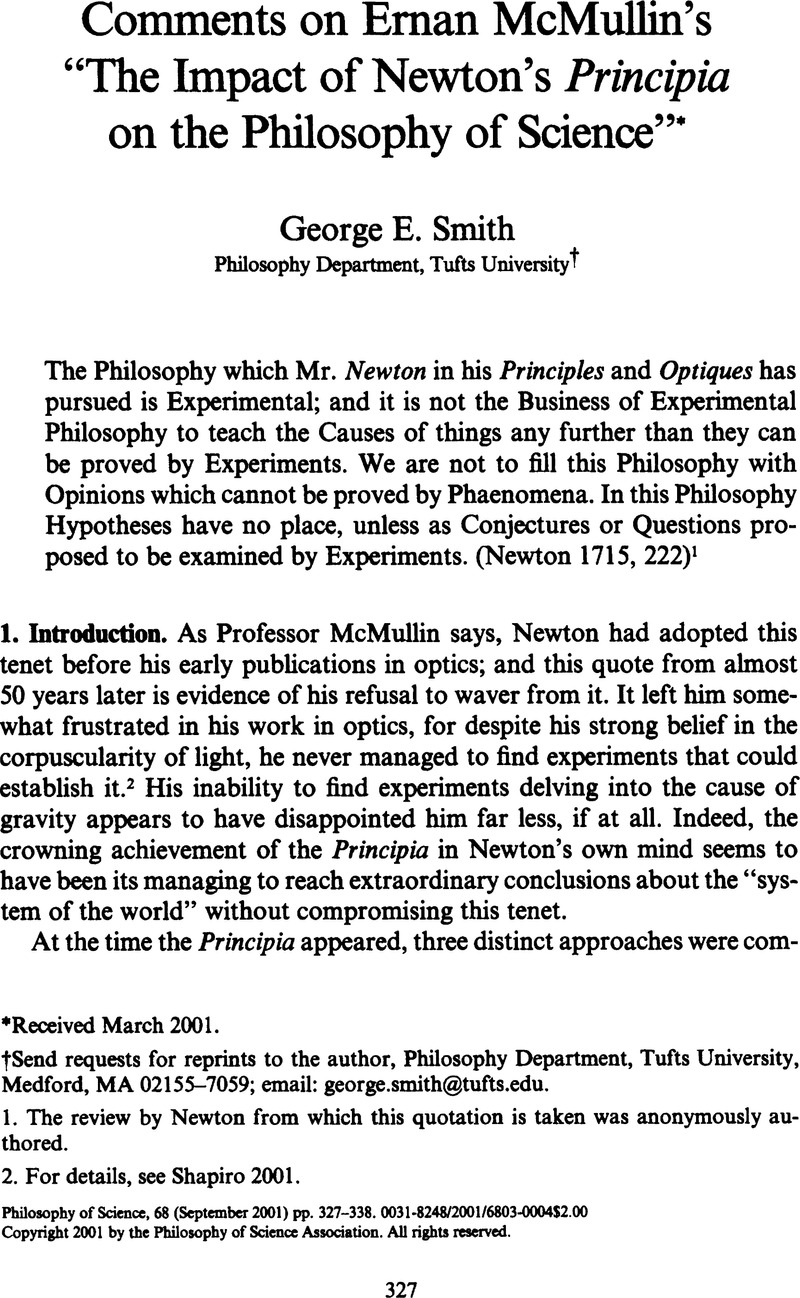Crossref Citations
This article has been cited by the following publications. This list is generated based on data provided by Crossref.
Ducheyne, Steffen
2005.
Mathematical models in Newton'sPrincipia: A new view of the ‘Newtonian Style’.
International Studies in the Philosophy of Science,
Vol. 19,
Issue. 1,
p.
1.
Dea, Shannon
2005.
Thomas Reid's Rigourised Anti-Hypotheticalism.
Journal of Scottish Philosophy,
Vol. 3,
Issue. 2,
p.
123.
Schliesser, Eric
2011.
Newton’s Challenge to Philosophy: A Programmatic Essay.
HOPOS: The Journal of the International Society for the History of Philosophy of Science,
Vol. 1,
Issue. 1,
p.
101.
Huggett, Nick
Smith, George E.
Miller, David Marshall
and
Harper, William
2013.
On Newton’s method.
Metascience,
Vol. 22,
Issue. 2,
p.
215.
Brading, Katherine
2015.
Physically locating the present: A case of reading physics as a contribution to philosophy.
Studies in History and Philosophy of Science Part A,
Vol. 50,
Issue. ,
p.
13.
Schliesser, Eric
2018.
What Does it Mean to be an Empiricist?.
Vol. 331,
Issue. ,
p.
15.
Demeter, Tamás
and
Schliesser, Eric
2019.
The uses and abuses of mathematics in early modern philosophy: introduction.
Synthese,
Vol. 196,
Issue. 9,
p.
3461.
Schliesser, Eric
2020.
Does Berkeley's Immaterialism Support Toland's Spinozism? The Posidonian Argument and the Eleventh Objection.
Royal Institute of Philosophy Supplement,
Vol. 88,
Issue. ,
p.
33.
Biener, Zvi
and
Domski, Mary
2023.
Theory, Evidence, Data: Themes from George E. Smith.
Vol. 343,
Issue. ,
p.
139.
Wells, Aaron
2024.
Du Châtelet, induction, and Newton's rules for reasoning.
European Journal of Philosophy,





